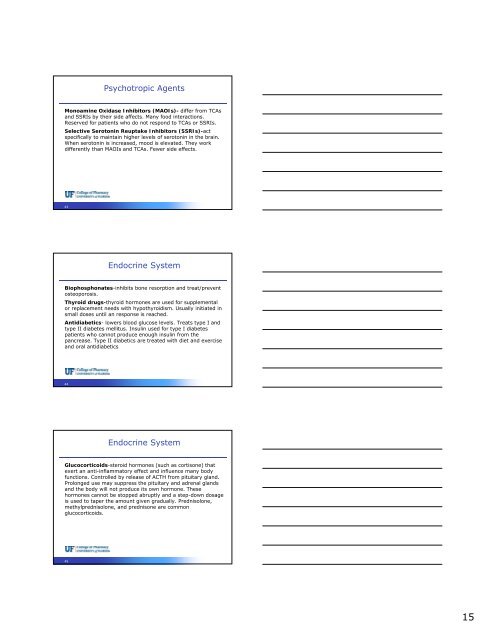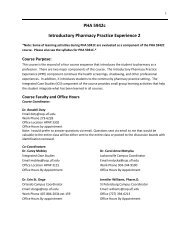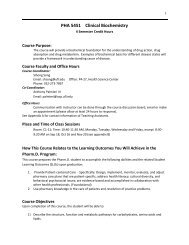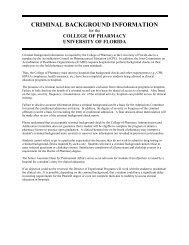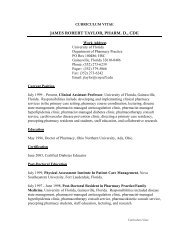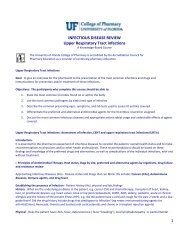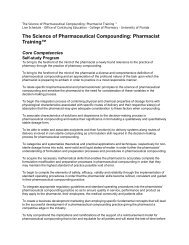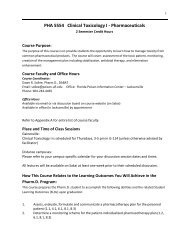Drug Classifications
Drug Classifications
Drug Classifications
You also want an ePaper? Increase the reach of your titles
YUMPU automatically turns print PDFs into web optimized ePapers that Google loves.
Psychotropic Agents<br />
Monoamine Oxidase Inhibitors (MAOIs)- differ from TCAs<br />
and SSRIs by their side affects. Many food interactions.<br />
Reserved for patients who do not respond to TCAs or SSRIs.<br />
Selective Serotonin Reuptake Inhibitors (SSRIs)-act<br />
specifically to maintain higher levels of serotonin in the brain.<br />
When serotonin is increased, mood is elevated. They work<br />
differently than MAOIs and TCAs. Fewer side effects.<br />
43<br />
Endocrine System<br />
Biophosphonates-inhibits bone resorption and treat/prevent<br />
osteoporosis.<br />
Thyroid drugs-thyroid hormones are used for supplemental<br />
or replacement needs with hypothyroidism. Usually initiated in<br />
small doses until an response is reached.<br />
Antidiabetics- lowers blood glucose levels. Treats type I and<br />
type II diabetes mellitus. Insulin used for type I diabetes<br />
patients who cannot produce enough insulin from the<br />
pancrease. Type II diabetics are treated with diet and exercise<br />
and oral antidiabetics<br />
44<br />
Endocrine System<br />
Glucocorticoids-steroid hormones (such as cortisone) that<br />
exert an anti-inflammatory effect and influence many body<br />
functions. Controlled by release of ACTH from pituitary gland.<br />
Prolonged use may suppress the pituitary and adrenal glands<br />
and the body will not produce its own hormone. These<br />
hormones cannot be stopped abruptly and a step-down dosage<br />
is used to taper the amount given gradually. Prednisolone,<br />
methylprednisolone, and prednisone are common<br />
glucocorticoids.<br />
45<br />
15


